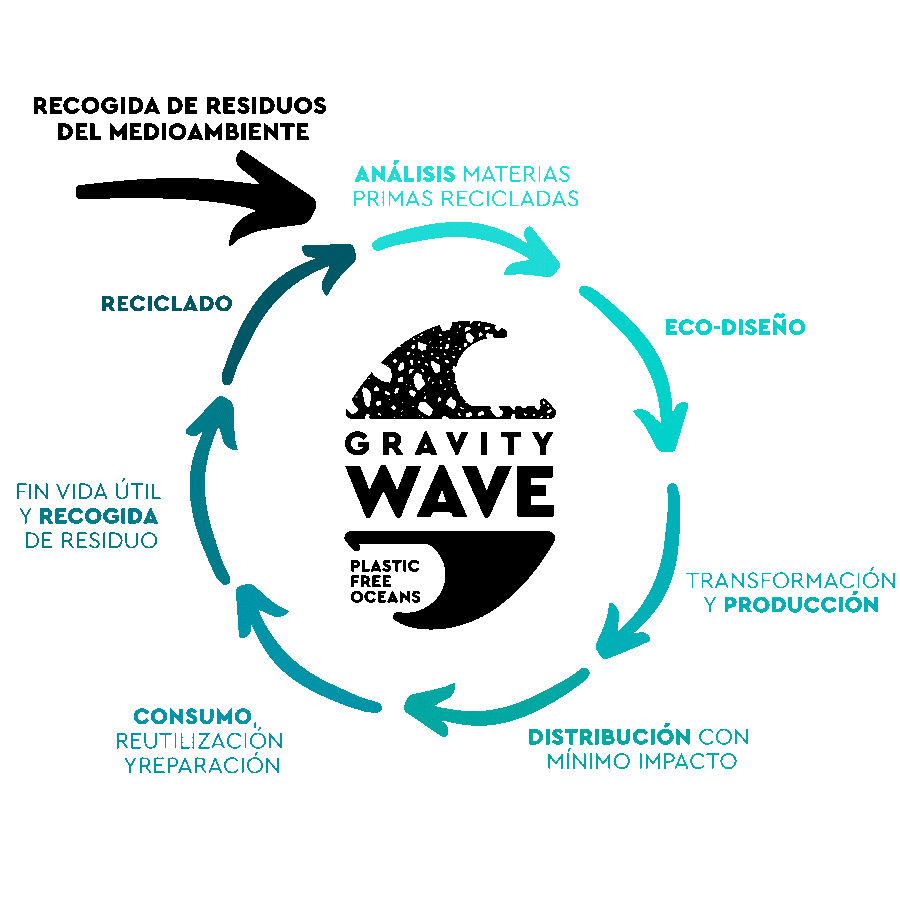Introduction
The transition to a clean energy economy is rapidly changing the job landscape, creating new opportunities and transforming industries. The energy transition and the labor market is not a new aspect in this sector, as the world moves towards a circular economy and greater sustainability, this market is expanding to include new roles and specialized skills.
The alternative energy sector, in particular, is one of the most prominent in the transition towards a more sustainable economy. This sector, which includes solar, wind, hydroelectric and other renewable sources, has experienced steady growth in recent decades and has created millions of jobs around the world.
Generally speaking, the transition to a clean energy economy is changing the way work in the energy industry is viewed. Before, most jobs were related to the extraction, production and distribution of fossil fuels, but now, clean energy requires a wide range of skills and professionals, from alternative energy engineers and technicians to project managers and energy specialists. marketing and sales.
Green energy is a topic of great importance today, not only because of its impact on the environment, but also because of its high influence on the labor market. The transition towards renewable energy sources, such as solar, wind and tidal power, is generating new and interesting employment opportunities and transforming how employment is understood in the energy sector.
In this article we will explore the benefits of clean energy , as well as the latest trends and technological advances in this field. Join us on this journey towards a more sustainable future and discover how clean energy is changing the planet.
New trends in the energy market
The transition to alternative energy is an urgent need to combat climate change and ensure a sustainable future for the next generations. In this process, entrepreneurship plays a fundamental role, since it can drive innovation and the creation of new companies in the green energy sector.
The integration of clean energies and the participation of consumers in the electricity market are some of the trends that are positively impacting this sector.
Industry 4.0 offers multiple opportunities and benefits that leaders can take advantage of to drive a smarter and more flexible organization. In addition, newly created and established companies use business models as auxiliary tools in the design, prototyping and structuring of new operations.
On the one hand, the creation of recent ventures is a crucial way to generate employment and improve economic development and on the other, innovation in the energy sector can optimize the engineering and construction of new facilities and alternative energy plants, reduce the time marketing, increase production and decrease CO2 , which improves competitiveness in the energy sector.
Creativity and adaptability are essential to face current trends and turn them into opportunities. The importance of innovation cannot be denied, since it is a key factor for economic growth and differentiation in the market.
Innovation activities, such as the formal development of research and the acquisition of goods, are related to the performance of organizations.
Clean Energy Job Opportunities
As the demand for clean energy continues to grow, the energy industry is creating a large number of jobs at all levels, from entry-level jobs to senior management positions. Today, clean energy is estimated to employ more than 11 million people worldwide, with a steady increase in recent years.
Solar and wind energy are the green energy sources that generate the most jobs worldwide. In the United States, for example, solar energy has created more jobs than any other energy sector, including oil and gas. In Europe, wind energy has created more than 300,000 direct jobs and has contributed to the creation of many more indirect jobs.
Clean energy jobs also offer a wide variety of skills and training. From construction workers and technicians to engineers and project managers, there are a wide variety of jobs in the alternative energy industry that require different skills and training.
Circular economy : energy transition and the labor market
The circular economy is based on the idea that waste and materials can be reused, repaired or recycled instead of being thrown away. This helps reduce the demand for raw materials and energy while reducing costs and carbon emissions.
In the energy industry, the circular economy can be applied in various ways. For example, lithium-ion batteries used in electric vehicles can be recycled to recover the valuable metals they contain.
In fact, it is estimated that by 2035 the battery recycling industry could employ more than 10,000 people worldwide.
It is important to highlight that this technological innovation managed to generate economic growth and reinforce the structure of sustainable innovation, with stable technological employment of high value.

Companies that lead the circular economy.
First, there’s Winnow, a British company that has developed smart meters to analyze rubbish. They are used in commercial kitchens, where they measure what food is thrown away and identify ways to reduce the problem. In some kitchens up to a fifth of what is purchased can go to waste and Winnow has managed to cut this in half, which is equivalent to saving their customers over USD 25 million per year in the process.
Second place goes to DyeCoo, a company from the Netherlands that has developed a textile dyeing process, which does not use water or other chemicals other than dyes. It uses highly pressurized carbon dioxide, which dissolves the dye so it penetrates deep into the fabric, producing brilliant colors. And since the fabric doesn’t need to be dried, the process uses less energy. The company already has partnerships with big brands like Nike and IKEA.
Third in the ranking is Close the Loop, an Australian firm that has spent more than a decade reclaiming printer cartridges and soft plastics into roads. These materials are mixed with asphalt and recycled glass to make a surface that lasts up to 65% longer. The equivalent of 530,000 plastic bags, 168,000 glass bottles and the residual toner from 12,500 printer cartridges are used for each kilometer.
Canadian company Enerkem ranks fourth, after creating a technology that extracts carbon from non-recyclable trash. It takes them five minutes to convert carbon into a gas that is used to produce biofuels, such as methanol and ethanol, as well as chemicals that can be used in thousands of everyday products.
France-based Schneider Electric specializes in energy management and automation. This multinational ranks fifth, as it uses recyclable materials in its articles, extends the useful life of the product through leasing and pay-per-use, and has introduced return schemes in its supply chain.
Sixth on the list is Cambrian Innovation, an American company that treats wastewater contaminated by industrial processes, not only turning it into clean water, but even producing biogas, which can be used to generate clean energy.
Lehigh Technologies ranks seventh and is a US firm that turns old tires and other rubber waste into micronized rubber powder, which is then used in a wide variety of applications: from tires to plastics, asphalt and construction material.
HYLA Mobile works with the world’s leading manufacturers and service providers to reuse and convert cell phones or their components. It is estimated that the American company has used more than 50 million devices, avoiding 6,500 tons of electronic waste that would otherwise end up in landfills. This management places it in eighth place.
To demonstrate that innovation in the circular economy is not limited to small businesses. In tenth place, finally, is the largest brewer in the world: AB InBev. The Belgian company wants 100% of its products to be sold in returnable packaging or made mostly from recycled material by 2025. Almost half of its beverages are sold in returnable glass bottles.

What kind of companies can be created in the energy sector?
Energy service companies (ESCO) can be created, which develop energy saving and/or cogeneration activities for industrial and commercial clients. Also companies engaged in the production, transportation, handling and sale of energy products.
Energy Services companies are companies that offer a wide range of solutions and services for the identification and implementation of energy efficiency opportunities and substitution in the final use of traditional energy sources for alternative energy.
These companies assume the financial risk, since they are the ones that provide the initial investment to improve the facilities and in exchange receive a part of the profits that these improvements generate. The ESCO (Energy Service Company) model is an innovative approach that allows these companies to offer performance and savings guarantees to their customers.
ESCOs can provide a wide range of energy-related solutions and services, such as design, financing, installation, operation and maintenance of energy projects.
Conclution.
The transition to clean energy not only represents a solution to mitigate climate change and reduce dependence on fossil fuels, but it can also transform the job market around the world. The circular economy offers a number of opportunities and benefits to the energy industry, including the creation of green jobs, increased efficiency and profitability, and the reduction of waste and polluting emissions.
Ultimately, the circular economy is a way of making the most of available resources, rather than just consuming and throwing them away. The transition to clean energy and the circular economy can be a catalyst for a significant change in the way we think about the value of resources and the way we use them. By taking a more circular and sustainable approach, we can create a more prosperous, just and resilient future for all.
Sources
www.world economic forum
https://www.creacionescopyright.com/libros/energias-renovables
https://www.worldenergytrade.com/energias-alternativas/
https://plataformaenergetica.org/energia/energia-en-el-mundo/


























